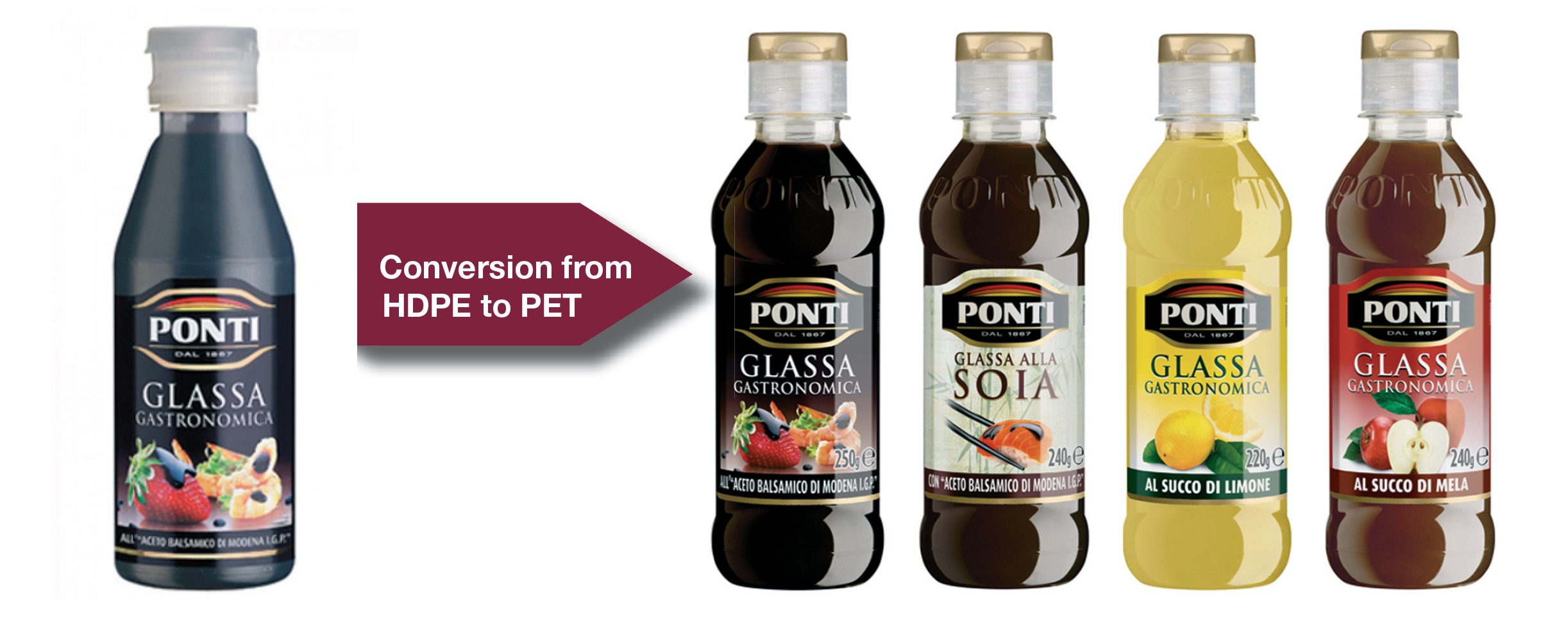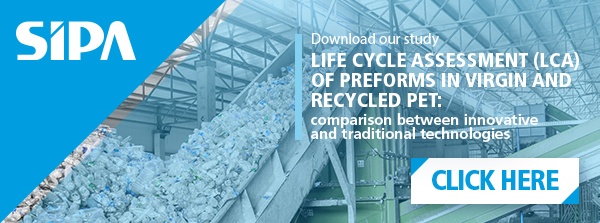
As we have already mentioned in a dedicated article, the market is offering many opportunities to condiments and glazes of different types to accompany ready meals.
Among these there are certainly the glazes of traditional balsamic vinegar and many other variations that are the result of research and creativity on the part of many producers in the food industry.
On the packaging side, these products need the right containers, able to intercept both the needs of food companies and the satisfaction of the final consumers.
The evolution of packaging for food glazes
The standard container for glazes, until recently, was in HDPE. A resistant material, but with some limits for this category of food products.
First of all, HDPE, due to its characteristics, is opaque with no glossiness nor shiny effect. This lack of transparency means that potential buyers are not in a position to see the product they are intend to buy.
From the point of view of mechanical characteristics, HDPE is difficult to squeeze, and this is a limit when consumers want to pour the product on their food. Moreover HDPE mechanical features don’t allow freedom in shape creation.
READ ALSO: "Lightening the weight of PET bottles: great focus on the neck"
The challenge taken up by SIPA for Ponti
The answer to these problems is PET, based on SIPA's technology to design and create packaging that meets all the needs of producers and consumers. In this case the goal was to develop a new shape of container for Ponti vinegar glaze, a leading Italian brand in this market segment.
The conversion from HDPE to PET was done to improve aesthetics as well as to give companies the freedom to create new shapes, optimizing performance.
The packaging in PET allows the overcoming of all the HDPE limits indicated above, has an attractive shape with a glossy and transparent surface, is easy to handle and to be squeezed.
Even on the production side, the solution does not present problems in terms of blowing, it is only necessary to pay particular attention to the orientation of the base.
READ ALSO: "Yogurt product packaging design: creativity becomes fundamental"

The solution proposed by SIPA: PET packaging
The new packaging design conceived and created by SIPA for gastronomic glazes presents first of all a highly attractive appearance.
The PET packaging come in two squeezable sizes, holding around 145 or 250 g of product, for each flavour. The bottles themselves weigh 14.5 g and are produced on a linear blow-moulder model SFL 4/4 at 1,500 bottles per hour per cavity.
This is the summary of the advantages starting, as a reference, from the original HDPE to PET packaging:
- 10g lighter vs original bottle (HDPE: 24.5g, PET: 14.5g)
- Transparent
- More appeal to the end customer
- Squeezable, easier handling
- Freedom on design, better aesthetic
- Better barrier properties
- Optimized base structure; base contains orientation feature to correctly orientate during high-speed filling and labeling
Award-winning model
This new packaging for glazes won first place in the "Packaging Food" category and third place in the "Packaging Division Award" category at the 2014 SPE ABC Awards.
Do you want to know in detail targeted solutions for your company?
Contact our experts.






